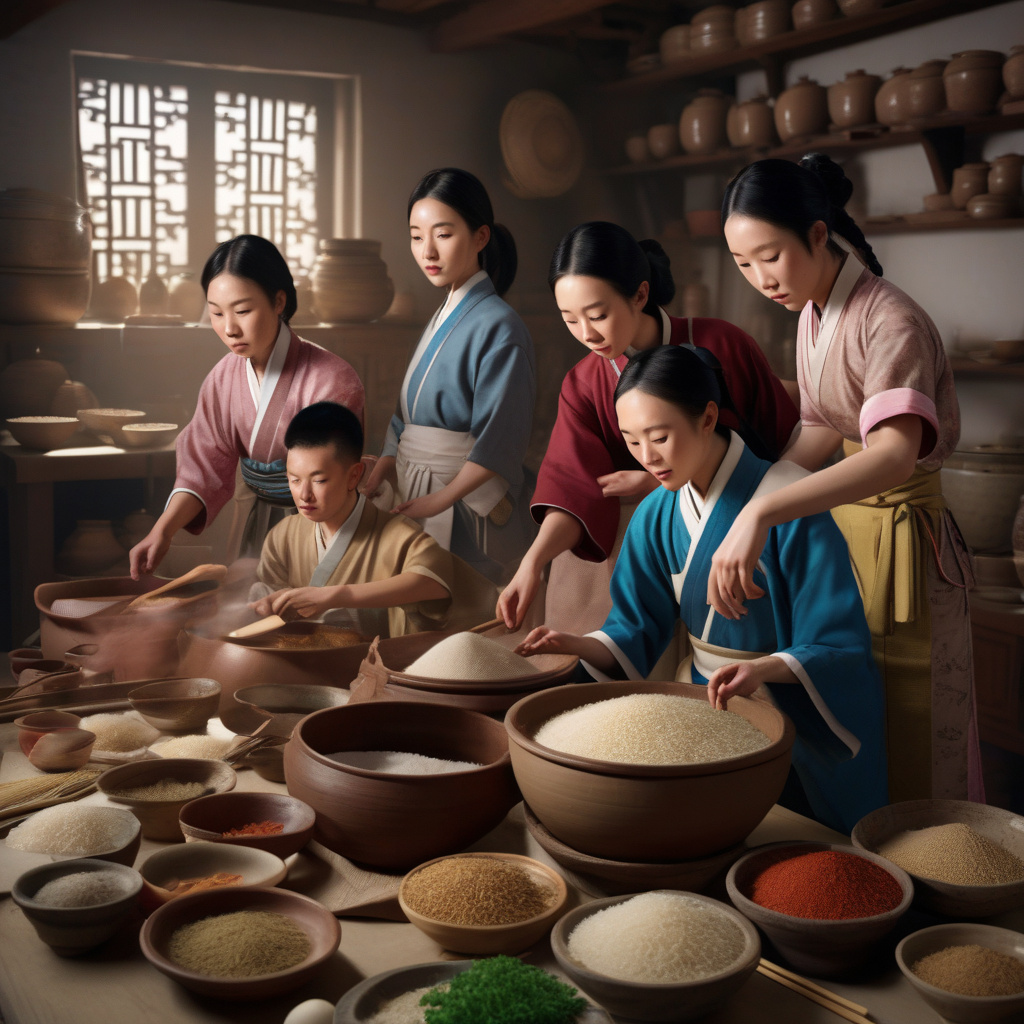Reviving History: Chinese Students Bring 2,000-Year-Old Rice Recipe Back to Life
Chinese students brought the ancient past to delightful light by combining Han-era techniques and modern culinary expertise. The revival of a 2,000-year-old rice recipe has captured the attention of food enthusiasts and historians alike, showcasing the enduring appeal of traditional cuisine in today’s fast-paced world.
The story begins with a group of passionate students from a university in China who embarked on a journey to rediscover the flavors of their ancestors. Intrigued by the culinary practices of the Han dynasty, they set out to recreate a rice dish that had long been forgotten. Through meticulous research and experimentation, they were able to piece together the ingredients and cooking methods needed to resurrect this ancient recipe.
What sets this culinary endeavor apart is the students’ commitment to authenticity. Rather than taking shortcuts or modernizing the dish to suit contemporary tastes, they stayed true to the traditional techniques used over two millennia ago. From hand-pounding the rice to fermenting it in clay pots, every step was carefully followed to ensure an authentic recreation of the Han-era recipe.
The result was nothing short of spectacular. The dish, once enjoyed by ancient emperors and commoners alike, was brought back to life in all its glory. With a blend of aromatic spices, tender rice, and subtle flavors, it offered a glimpse into a bygone era where food was not just sustenance but a form of art.
But the students’ efforts did not stop there. Realizing the cultural significance of their discovery, they organized a special event to showcase the dish to the public. Food critics, historians, and fellow students were invited to taste the recreated recipe, sparking a newfound appreciation for the culinary heritage of China.
In a world where fast food and instant meals dominate the culinary scene, the revival of ancient recipes serves as a reminder of the richness and depth of traditional cuisine. It highlights the importance of preserving heritage and passing down age-old practices to future generations, ensuring that the stories and flavors of the past are not lost to time.
Moreover, the success of the students’ endeavor sheds light on the growing trend of embracing authenticity and history in a modern context. As consumers seek unique experiences and connections to the past, there is a rising demand for traditional recipes and artisanal techniques that have stood the test of time.
The revival of the 2,000-year-old rice recipe by Chinese students is a testament to the power of passion, curiosity, and dedication in uncovering the treasures of history. It serves as a beacon of inspiration for those who strive to preserve heritage in a world that is ever-changing and fast-paced.
In conclusion, the revival of ancient recipes not only offers a taste of the past but also provides a link to our cultural roots and identity. By honoring the traditions of our ancestors, we not only celebrate where we come from but also pave the way for a more flavorful and connected future.
heritage, cuisine, authenticity, history, preservation












